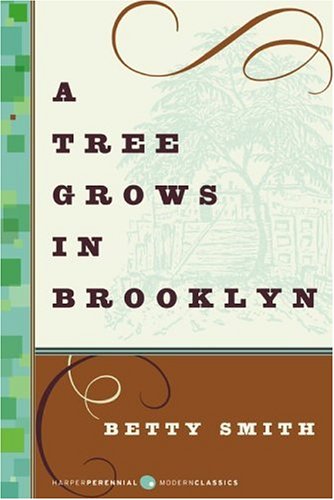All Nonfiction
- Bullying
- Books
- Academic
- Author Interviews
- Celebrity interviews
- College Articles
- College Essays
- Educator of the Year
- Heroes
- Interviews
- Memoir
- Personal Experience
- Sports
- Travel & Culture
All Opinions
- Bullying
- Current Events / Politics
- Discrimination
- Drugs / Alcohol / Smoking
- Entertainment / Celebrities
- Environment
- Love / Relationships
- Movies / Music / TV
- Pop Culture / Trends
- School / College
- Social Issues / Civics
- Spirituality / Religion
- Sports / Hobbies
All Hot Topics
- Bullying
- Community Service
- Environment
- Health
- Letters to the Editor
- Pride & Prejudice
- What Matters
- Back
Summer Guide
- Program Links
- Program Reviews
- Back
College Guide
- College Links
- College Reviews
- College Essays
- College Articles
- Back
A Tree Grows in Brooklyn by Betty Smith MAG
I was introduced to the classic A Tree Grows in Brooklyn when I was 11. I was quite a prodigious reader for my age, but I doubt that I'd have stuck with it if I'd actually been reading it. However, my mom purchased the audiobook, narrated by Anna Fields, and we listened to it in the car. It's best taken in large doses in order to notice the understated humor and pre-referencing, but the author includes just enough condensed summary to keep her inconsistent readers up-to-date.
A Tree Grows in Brooklyn needs a patient and sensitive reader. It begins in 1902 and follows Mary Frances Nolan, or Francie, through the slums of Williamsburg in Brooklyn. The book is narrated in the third person, but we get frequent peeks into the minds of Francie's parents, her brother Neeley, and those they encounter.
It could be described as a coming-of-age story, but that phrase is overused. A Tree Grows in Brooklyn doesn't just illustrate Francie's coming-of-age, but also her mother's childhood, her childhood, her brother's birth, her first kiss, and her father's death. Betty Smith tells of Francie's world with sincerity, clarity, and objectivity, without any wavering at her protagonist's tears or broken dreams.
In one of the most poignant and subtle metaphors I've seen, the author suggests a parallel between Francie and the irrepressible tree that sprouts up in all Brooklyn tenements: The Tree of Heaven. Without saying, “Francie was like a tree: small, delicate, but unbreakable,” Smith opens the book with a description of the Tree of Heaven, slipping in images of the tree's growth over the years.
Each time the Nolans move to a new home, the tree is included in meticulous (but never tedious) description. In one tenement, the tree grows up and overshadows the Nolans' balcony, providing book-devouring Francie with a private, shady retreat in which to read, savor precious peppermint candy, and spin tales of the people passing below. She often watches from her balustrade as older neighbor girls prepare for dates, taking delight in watching their intimate rituals.
The story closes as Francie, who is preparing for her own date, looks out the window and sees her young neighbor seated on a balcony with a book in her lap and a bag of candy by her side, watching Francie in the dim light.
Although A Tree Grows in Brooklyn contains some material unsuitable for younger readers, the unflinchingly honest narrative and Francie's reaction to the events subdue the more mature aspects of the book. I'd recommend it for ages 12 and up, although the audiobook will hook younger readers who are ready for the content.
Similar Articles
JOIN THE DISCUSSION
This article has 5 comments.


59 articles 1 photo 8 comments
Favorite Quote:
Gold teeth, Grey Goose, tripping in the bathroom, blood stains, ball gowns, trashing the hotel room, we don't care, we're driving Cadillacs in our dreams --Lorde